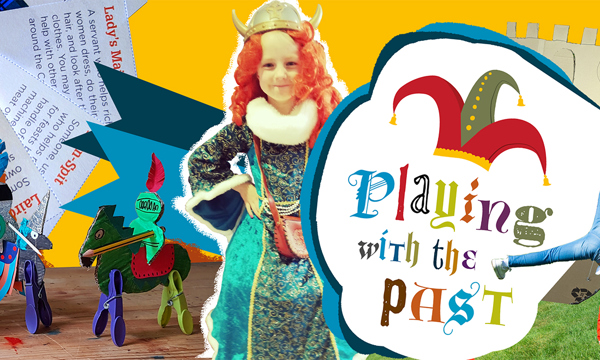1 Welcome!
Step into historic shoes
We’re inviting families (and those young at heart) to play with the past by trying out different medieval jobs.
Why not start your journey with our free ‘download and print’ game That Job is History, where you have to pitch for a job like ‘gong farmer’ (poo shoveller) using the three skills cards you’ve drawn. Excellent for encouraging creative thinking and persuasive talking!
If you've younger children we'd recommend our Play Castles at Home download. No need to print - just have a look at the activity suggestions and take them any direction you choose!
Pick which job you'd like to try out first:
- Train as a castle-building stonemason
- Get kitted out as a jousting knight
- Party like a medieval King or Queen
- Prepare for a medieval battle
- Create some royal works of art
- Immerse yourself in medieval abbey life
We’d love to hear what you get up to – please share your #LearningWithHES with us online!
PS – If you’ve got through all the activities and are hungry for more, check out our Learn, Create & Play pages for even more ideas!
2 Train to be a castle-building stonemason!
Train as a castle-building stonemason
Time to flex your design, building and creative muscles!
Medieval stonemasons were responsible for building structures like castles and cathedrals - many of which still stand today. They had to make do without the computer design tools or the electric equipment that modern architects and builders use, and were often given the challenge of remodelling existing buildings as styles and needs changed.
Here are a few ways that you can step into the shoes of a medieval stonemason from home:
Prepare your site like a master mason
Have a look at some medieval construction techniques and try a few out a few of the challenges:
Den time!
Make a castle den (inside or outside) with inspiration from some of these recreations of castle features made from household objects.
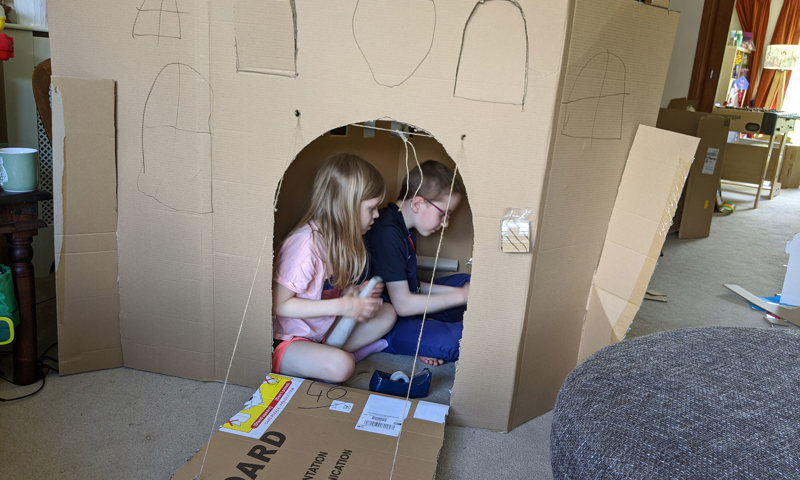
Carve a masterpiece from soap
Try out some soap carving inspired by medieval stone work.
Get messy making marks! (early years)
Try some sensory play activities inspired by masons' marks.
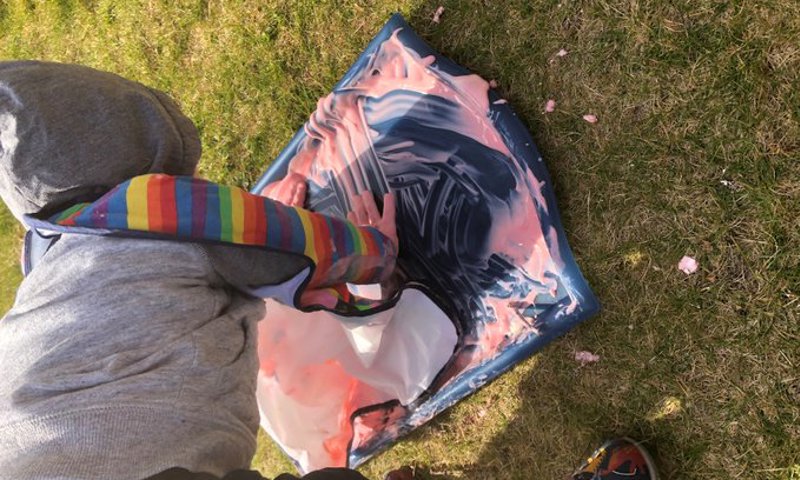
Pens and paper at the ready!
Make your own mask of one of the carved stone heads at Elgin Cathedral.
Create a castle with Minecraft or Lego
Build a castle online or offline with 11-year-old Lochie's instructions
How did you enjoy your time as a stonemason in training? We'd love to hear about your building adventures - please do share your #LearningWithHES with us online.
3 Kit yourself out as a jousting knight
Kit yourself out like a knight!
Time to show off your bravery, skill and style.
Knights in medieval times would sometimes joust in tournaments - competitions where they used long lances. They rode their horses towards each other and tried to knock their opponent off their horse. It was very dangerous for the knights competing, but a very exciting day out for all the many spectators who came to watch.
Here are a few ways that you can step into the armour of a medieval jousting knight from home:
Design your coat of arms
Knights would have fought and jousted with a shield decorated with their Lord's coat of arms. Create a shield that's unique to you.
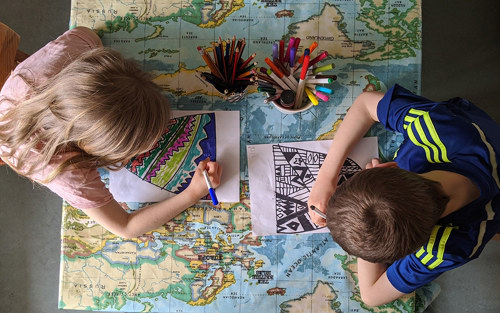
Craft your kit
Jousting was an extremely risky business. Prepare for defence and attack - get your helmet, your horse and a lance ready!
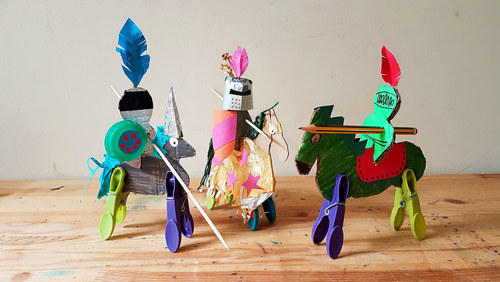
Visualise your victory
Time to either enjoy our printable colouring sheet or draw your own jousting tournament scene.
Hold your own jousting tournament!
If you're practicing jousting on your own with your new lance, we'd recommend hanging a target from string off a door frame or a washing line.
If you'd like to joust with someone else in your household, make some mini knights on horseback to joust on your table or floor - check out Craft Knight's top tips. You might even like to gather a crowd of your toys to watch the action!
How did you enjoy your time as a jousting knight? We'd love to hear about your knightly adventures - please do share your #LearningWithHES with us online.
4 Party like royalty!
Time to dive into a life of luxury.
Kings and queens in medieval times had a lot of power and money. So did Lords and Ladies living in castles across the country. They could afford lavish furnishings for their homes and have the finest clothes in the land made for them. To show off their wealth they would hold large feasts for many guests, with decadent food and special entertainers like musicians, minstrels and jesters.
Here are a few ways that you can step into the role of a medieval king or queen from home:
Design your jewels and bed chamber
Get your best pens and pencils out and either colour in our template (based on the Scottish crown jewels called the Honours of Scotland) or design your very own personal crown! Have a go at creating a luxurious royal bed chamber - use our printable version or use it as inspiration and go freestyle!
Treat a family member like royalty
A royal household would have had personal assistants - a chamberlain for the king and ladies-in-waiting for queens. They would help them get dressed, tidy their things and bring them anything they needed. Can you spend some time waiting on someone in your family? Perhaps a parent or carer? They might need a lot of drinks and snacks, and cushions to be extra comfortable! They might also want you to read out loud to them, and to open doors for them. Or perhaps they have more outrageous demands - a tower of toast? 4 blankets? A foot massage?
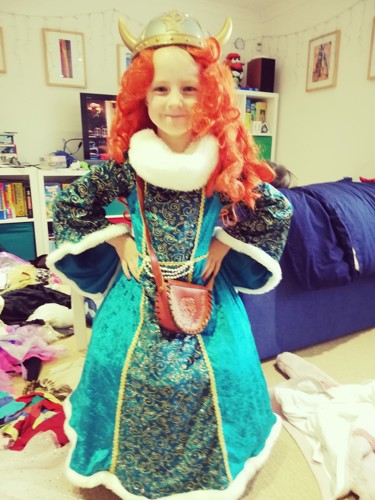
Plan a feast
Take a look through our two-page family guide to Feasting in the Great Hall. You'll see that feasts would have involved loads of planning - use our handy one-page checklist to design your perfect party. You could also use our colouring sheet to draw an imaginary banquet and guests - or use it as inspiration and draw your own!
Bake some treats
Don't fancy roast swan for tea? Fear not, we've got a tastier food challenge for you! Mary Queen of Scots is reported to have been fond of shortbread - why not make some (with adult help) to share with your family!
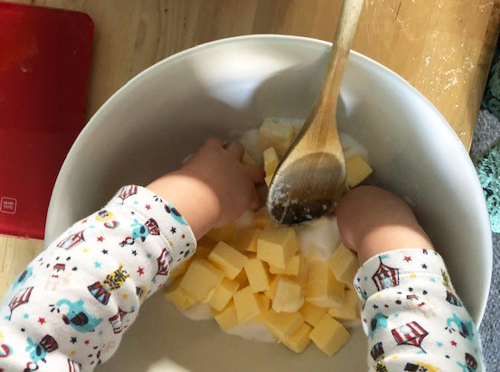
Party time!
After your feast you'll need some entertainment - take turns to perform your best tricks. Can you do a cartwheel? Are you good at impressions? Can you sing or dance, or recite a poem? Maybe you'd prefer to do a show - a thin sheet or piece of tissue paper with a light behind can make a wonderful puppet theatre. Family and friends online might like to get involved too! You could even make a simple jester's hat to get into the mood. h
Or a simple game of charades followed by a disco could round off your royal week nicely!
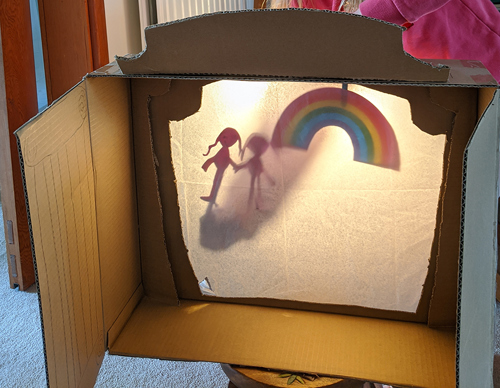
How did you enjoy your time as a medieval king or queen? We'd love to hear about your royal adventures - please do share your #LearningWithHES with us online.
5 Hone the battle skills of a medieval soldier!
Time to plan and plot...
Medieval soldiers both defended and attacked castles, depending on what orders their boss (the marshall) gave them. When defending castles they used bows and arrows and also - gulp - threw things like boiling oil and rocks down 'murder holes' onto attackers to injure them.
Equipment used for attacking castles included catapults (which used tension), trebuchets (which used counterweights), battering rams and siege towers. These weapons were enormous, expensive and heavy - planning to attack a castle could take months of preparation and many soldiers!
Here are a few ways that you can play medieval soldiers from home:
Get to know your castle
We'd recommend having a look at our 3D model of Edinburgh Castle - can you find any weak spots that could be hard to defend? Or if you were planning to capture the castle, are there places you would attack first?
Sketch out your battle plans
Print out our colouring sheet or use it as inspiration for your own castle drawing and attack or defence plans. You might also want to use our coordinates map of Edinburgh Castle to mark defensive weaknesses or any key points of attack.
Make your own castle stronghold
Use a cereal box to make your own castle stronghold. Design in lots of defensive features like narrow arrow slits, a drawbridge and battlements. You could also make a castle on Minecraft or with Lego - have a look at Lochie's minecraft challenge.
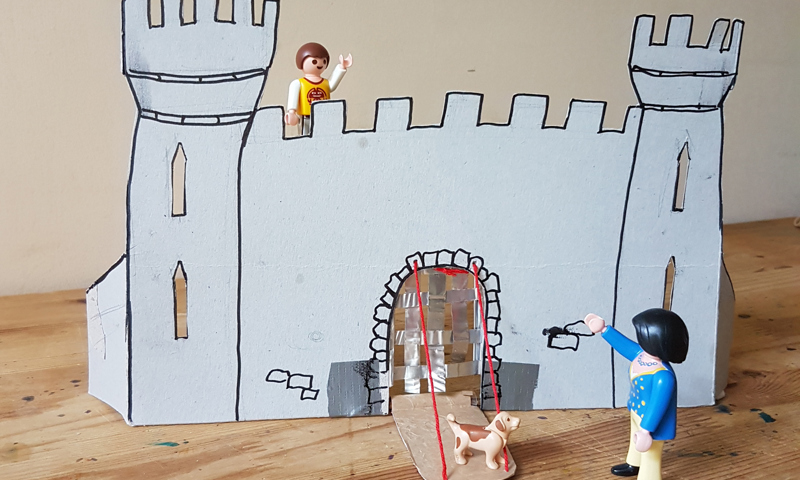
Craft your siege weapons
Make a catapult by watching a short film from our Craft Knight and/or this step-by-step guide. You could also follow our instructions for making a trebuchet - double destruction!
Ready, aim, FIRE!
How long can your cardboard or lego castle stronghold stand up to the weapons you've created? If you made a Minecraft castle, what are you throwing down the murder hole?
How did you enjoy your time as a medieval soldier? We'd love to hear about your plotting and planning - please do share your #LearningWithHES with us online.
6 Create masterpieces like a medieval artist!
Time to sharpen your pencils and get creative...
Artists in medieval times held great importance as wealthy people wanted flattering portraits of themselves. For example Monarchs looking to marry would sometimes send their portraits to potential suitors. But it wasn’t just portraits that were valued - jewellery, stone carvings, tapestries, illustrated manuscripts and wall-art were also seen as symbols of someone’s importance. Often artists would make their own tools, as specialist art shops didn’t exist in the same way as they do today.
Here are a few ways that you can step into the shoes of a medieval artist from home:
Draw a magical creature
Medieval art is full of made-up creatures. Print out or be inspired by our unicorn colouring sheet. Can you invent your very own magical creature? Would it have the head of a cat and the body of a snail? What would you call it?
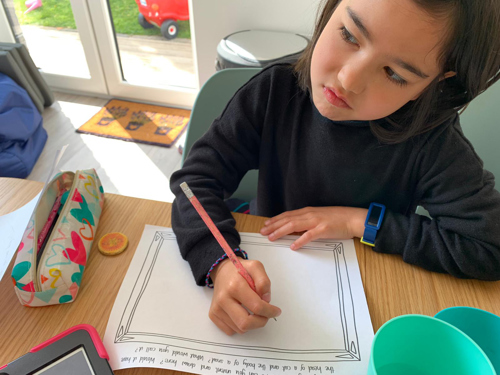
Make a selfie for your ceiling
Create your own portrait inspired by the unique Stirling Heads - enormous carved wooden portraits that clad one of the palace ceilings at Stirling Castle. Or if you're looking to take a resource out and about, simply print out some of our decorative borders to draw in.
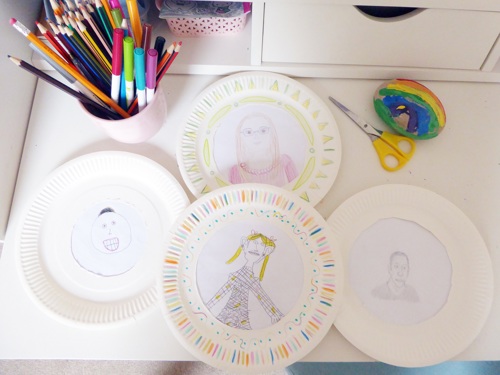
Create your own seal
When few people could read or write, wealthy people used seals as a signature. Older children who can use their own carving tools might like to make their own seal stamp (matrix) by carving a potato, apple, polystyrene or soap. We've also got play suggestions for younger children to find items from home to stamp and make their own seal

Imagine you're Mary Queen of Scots' portrait artist
Explore portraits of Mary Queen of Scots on the National Portrait Gallery's website to see how different artists portray her. Then have a go at drawing how you think she might have looked!
How did you enjoy your time as a medieval artist? We'd love to see your masterpieces - please do share your #LearningWithHES with us online.
7 Immerse yourself in medieval abbey life
Time to explore the life of medieval monks at work and play...
We look after lots of beautiful abbeys. Abbeys were important sets of buildings where abbots were in charge of monks. Religious activities, work, eating and sleeping all took place within an abbey. There were different types (orders) of abbey built in Scotland. They usually included a church and a cloister - a covered walkway with a side that’s open to a courtyard or garden. The different orders of monks and nuns wore different clothes and had different religious practices.
Here are a few ways that you can explore medieval abbey life from home:
Make a paper abbey
Use our activity sheet to craft your own paper abbey or be inspired to design your own!
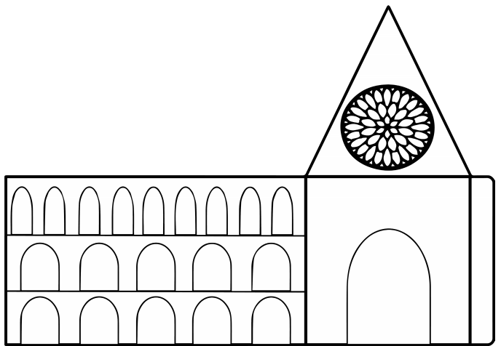
Learn about abbey gardens
When we visit an abbey today most of what we see are the ruins of buildings. It’s easy to forget that when nuns and monks lived in them they were surrounded by gardens. Learn about these gardens and get inspired by some simple home activity ideas.
Explore the Declaration of Arbroath
Draw, design and create through our new illustrated activity booklet celebrating the 700th anniversary of the Declaration of Arbroath. The declaration was a letter written when the Scots wanted to stop King Edward II of England trying to rule over Scotland - it was sealed at Arbroath Abbey.

Imagine you're a scribe
Before the printing press was invented, medieval monks called scribes had to copy books by hand! Some manuscripts were beautifully illustrated - try our A-Z colouring sheets to create embellished letters from your name.
Play Merelles/Nine Men's Morris and Abbey Snakes and Ladders
Merelles or Nine Men's Morris was popular game in medieval monasteries - we've found boards at Jedburgh and Dryburgh Abbeys. Or if you're looking for something more familiar, try our abbey-themed version of snakes and ladders.
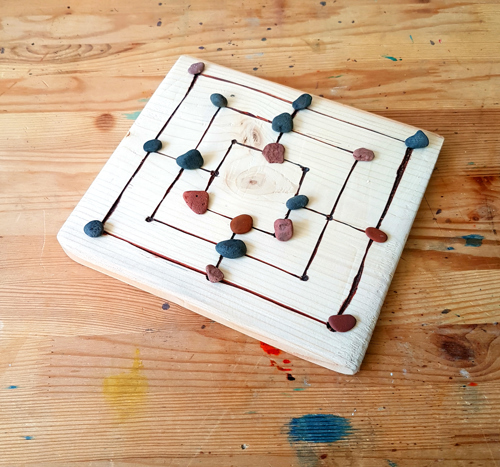
How did you enjoy your experience of medieval abbey life? We'd love to hear what your favourite activities were this week - please do share your #LearningWithHES with us online.

